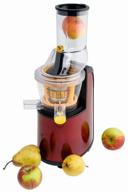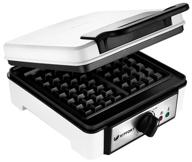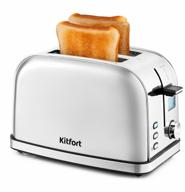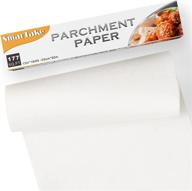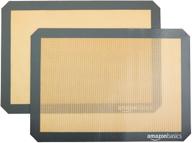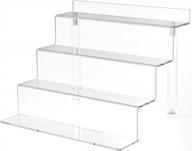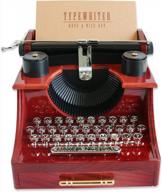The Joys of Homebrewing
Your Complete Guide to Brewing Beer at Home
Homebrewing beer is a fun, rewarding hobby that lets you explore the art and science behind one of humankind's oldest alcoholic beverages. With just a few basic brewing supplies, you can start crafting ales and lagers in your own kitchen that will rival any craft brewpub or microbrewery.
Must-Have Equipment for Any Home Brewery
While advanced homebrew systems exist, you can make great homemade beer with just a few essential tools:
- A large brew kettle (5 gallons or bigger)
- Fermenting bucket with airlock
- Bottling bucket and siphon
- Bottle caps and capper
- Sanitizing supplies
- Racking cane
- Hydrometer
- Thermometer
A full starter kit contains all these basic pieces of equipment and ingredients for your first batches.
Tips for Creating Your Own Delicious Brews
Follow these best practices for brewing quality homemade beer:
- Start with a proven recipe kit
- Sanitize all equipment before brewing
- Carefully monitor fermentation temperature
- Use fresh liquid yeast for fermentation
- Take gravity readings with a hydrometer
- Don't rush the bottling step
- Allow proper time to carbonate
- Keep detailed brewing notes
How to Bottle and Store Your Homemade Beer
Once fermentation is complete, it's time to bottle your beer for carbonating and storage:
- Sanitize bottles, caps, tubing, etc.
- Mix priming sugar into bottling bucket
- Siphon beer gently into bucket to mix
- Fill bottles leaving 1" headspace
- Cap bottles tightly
- Store for 2 weeks at room temp
- Transfer to fridge and chill before drinking
Hosting a Homebrew Party
Once you've become an experienced homebrewer, share your latest creations with friends and family by hosting a homebrew party:
- Make a variety of beer styles
- Design fun custom labels
- Provide tasting cards for feedback
- Supply pub snacks and food pairings
- Rinse tasting glasses between samples
- Send guests home with bottles
Homebrewing lets you take your love of beer to the next level. Follow these tips to craft outstanding ales and lagers to enjoy with pride. Cheers!
Similar products
Your Complete Guide to Brewing Beer at Home
There's nothing quite like cracking open a cold one of your very own homebrewed beer. With the right equipment and a little know-how, you can start crafting delicious ales and lagers in your own kitchen that rival the best microbrews.
Brewing Basics
At its core, brewing beer involves steeping grains in hot water to extract sugars, adding hops for bitterness and flavor, fermenting with yeast, and bottling the finished beer. Here's an overview of the basic homebrewing process:
- Heat water and steep specialty grains to create the wort
- Strain out grains and add malt extract to wort
- Boil wort and add hops according to recipe
- Cool boiled wort and transfer to fermenter
- Add yeast once wort reaches proper temperature
- Ferment for 1-2 weeks until complete
- Transfer beer to bottling bucket and add sugar
- Bottle beer and store for 2 weeks to carbonate
Essential Equipment
Brewing beer doesn't require a lot of expensive gear. Here is the basic homebrewing equipment you'll need:
| Item | Purpose |
|---|---|
| Brew kettle (5+ gallons) | Heating water and wort |
| Fermenting bucket + airlock | Fermenting beer |
| Bottling bucket + siphon | Bottling finished beer |
| Bottle caps + capper | Sealing beer bottles |
| Sanitizer + brushes | Cleaning equipment |
| Hydrometer | Measuring alcohol |
Tips for Success
Follow these best practices for brewing great homemade beer:
- Always thoroughly sanitize equipment
- Precisely control fermentation temperature
- Use fresh liquid yeast for fermenting
- Monitor beer with hydrometer readings
- Allow proper time for fermentation
- Don't rush the bottling/carbonating steps
- Take detailed brewing notes
- Have fun and be creative!
Recipe Development
The key ingredients in beer are water, malt, hops, and yeast. The specific recipes and variations you use will determine the beer's:
- Color - Dictated by malts used
- Bitterness - Comes from hops used and boil times
- Alcohol Content - Based on original gravity and yeast strain
- Flavor - Combination of all ingredients
- Aroma - Typically driven by late hop additions
Use proven recipes as a starting point, but don't be afraid to start experimenting with your own ingredients and procedures once you gain some experience.
Homebrewing is equal parts art and science. Follow this guide to start crafting your own delicious beers right in your home kitchen. Cheers!
Another interesting products
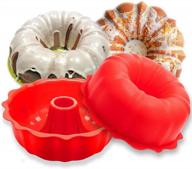

38 Review

Must-Have Equipment for Any Home Brewery
Having the right gear makes homebrewing safer, easier, and leads to better quality beer. While advanced systems exist, you can brew fantastic homemade beer with just a few key pieces of equipment.
Fermenters
Fermenting vessels are essential for turning sugary wort into delicious alcoholic beer. Options include:
- Plastic bucket fermenters - Inexpensive but not transparent. Use for primary fermentation.
- Glass carboys - Allow you to monitor fermentation. Better for secondary.
- Stainless steel fermenters - Durable, easy to clean and sanitize. More advanced.
Get both a 6-7 gallon plastic bucket and 5 gallon glass carboy to start.
Bottling
Bottling equipment is needed to transfer finished beer from fermenters into bottles:
- Bottling bucket - Has spigot to fill bottles easily.
- Siphon tubing - Transfers beer with gravity, not pumps.
- Bottle filler - Attaches to tubing to fill bottles.
- Bottle caps - Needed to seal bottles airtight.
- Bottle capper - Crimps caps onto bottles.
Boiling Kettle
A large kettle boiling 5+ gallons is required to heat up wort. Look for:
- Stainless steel construction
- 5-10 gallon capacity
- Heavy bottom for even heating
- Measurement markings
- Tight-fitting lid
Cleaning and Sanitizing
Sanitization is vital for brewing clean, non-infected beer. Must-have items include:
- PBW or OxyClean - Removes organic buildup.
- Star San - No rinse sanitizer for equipment.
- Cleaning brushes - For scrubbing fermenters, bottles, etc.
- Spray bottles - For applying sanitizing solution.
Other Accessories
Some other brewing gear that's highly recommended:
- Wort chiller - Cools boiled wort down rapidly.
- Thermometer - Monitors mash and fermentation temps.
- Hydrometer - Measures brew's alcohol content.
- Auto-siphon - Starts siphoning without mouth contact.
With these essential pieces of equipment, you'll be well on your way to brewing amazing homemade beer.
Top products in 🍶 Home Brewing & Wine Making Supplies
Tips for Creating Your Own Delicious Brews
Making outstanding beer at home is within reach for any passionate hobby brewer. Follow these tips and techniques to craft truly delicious homemade brews.
Start with Quality Ingredients
The core components of beer are water, malt, hops, and yeast. Invest in top quality varieties:
- Use good brewing water or filter your tap water.
- Select specialty malts like Caramel 80L or Munich for rich flavor.
- Choose aromatic hops like Citra, Mosaic, or Amarillo.
- Pick liquid yeast strains suited to the style, such as WLP001 California Ale yeast.
Master Proper Sanitization
Vigilant sanitization prevents off-flavors and ruined batches. Be sure to:
- Clean with soap then rinse all equipment after brewing.
- Use sanitizers like Star San or iodophor before brewing.
- Sanitize fermenters, yeast pitchers, equipment, and more.
- Replace plastic gear like tubing/siphon annually.
Control Fermentation Temperatures
Maintaining proper fermentation temperature maximizes beer quality:
- Use a temperature-controlled fermentation chamber.
- Set temperatures based on yeast type - ales 68-72°F, lagers 50-55°F.
- Keep fermentation area cool and dark.
- Consider insulation like foam wraps or heat belts if needed.
Take Accurate Readings
Use key tools to monitor brewing progress and gravity/alcohol:
- Use a hydrometer to measure original and final gravity.
- Calculate ABV = (OG-FG) x 131.25.
- Note specific gravity, ABV, taste at each stage.
- Use pH meter if adjusting mash or brewing water.
Allow Proper Time
Be patient at key stages for best results:
- Give yeast 7-10 days or more for primary fermentation.
- Let beer condition/carb in bottles at least 2 weeks.
- Allow extra time if making high gravity beers.
- Resist drinking early - age strong beers for months.
Improve Through Iteration
Tweak recipes over successive batches:
- Take detailed tasting notes each time.
- Adjust specialty malts and hop varieties.
- Change fermentation temperature.
- Try multiple yeast strains.
- Play with water chemistry.
Following these best practices will help you dial in delicious award-winning homebrew recipes over time. Stay passionate, experimental, and don't cut corners - your tastebuds will thank you!
How to get an Amazon Prime subscription for a profit in "Home Brewing & Wine Making Supplies"
Take advantage of free shipping
A Prime membership provides free two-day shipping on millions of items. This can add up to huge savings on large or heavy items like:
- 5+ gallon brew kettles
- Fermenter tanks
- Kegs & kegerators
- Grain sacks
- Carboys
The shipping costs alone on these bulky brewing supplies can exceed $10-20 per item. With Prime you get it free.
Buy in bulk & save
Take advantage of lower prices when buying ingredients in bulk batches such as:
- Hops in 1 lb bags
- Yeast packs in 10-packs
- Malt extract in 10 lb containers
- Bottle caps in 1000 count bags
The savings per item can be significant when purchasing in bulk. Free shipping makes this even more economical.
Leverage Prime-exclusive deals
Look for Prime Day limited deals, Lightning offers, and Prime-only discounts on equipment such as:
- Brewing starter kits
- Kettles, fermenters, and chillers
- Kegging systems
- Wine making equipment
Prime members get 30 minutes early access to Lightning deals, which often sell out. Extra savings add up.
Maximize Amazon rewards
Link an Amazon Prime Rewards Visa and get 5% back on all Amazon purchases. Rack up points for future equipment buys.
A Prime membership pays for itself quickly when home brewing. Take advantage of these tips and the subscription essentially becomes free.
How To Get Started With Home Brewing And Wine Making??
To get started with home brewing and wine making, you will need some basic equipment such as a starter kit. If you don't have any brewing or wine making equipment, don't worry, there are kits available that include all the equipment and ingredients you will need to get started. You can also make wine from scratch using fruits and flowers. The process of making wine at home is simple and easy. You will need to select the right fruits, understand the role of sugar and yeast, and follow the instructions carefully. Making wine at home is a careful ritual of adding, siphoning, and storing. It is an art as much as it is a science, so don't be afraid to mix things up and enjoy the process.
What Are The Basic Steps To Make Wine At Home??
Here are the basic steps to make wine at home:
- Prepare the ingredients: Select the right fruits, such as grapes, strawberries, and raspberries, and understand the role of sugar and yeast.
- Crush the fruit: Crush 16 cups of grapes or berries in a large crock.
- Ferment the juice: For white wines, pour the juice through a funnel into a glass carboy, then press the leftover skins and stems through a heavy-duty colander into a pot or bucket to collect the remaining juice. For reds, ferment the whole mess of juice, skins, and seeds after you pluck out as many stems as your patience allows.
- Add yeast: Add wine yeast according to the instructions on the packet.
- Monitor the fermentation: Keep the juice at a comfortable room temperature, as advised on the yeast instructions. It should begin to emit a light foam of carbon dioxide within a day or two, which signals the start of fermentation. Remove the stopper once a day, or as needed, to stir the juice and the lees that will begin to settle to the bottom.
- Age the wine: After fermentation, siphon the wine into a clean carboy and let it age for several months.
- Bottle the wine: Once the wine has aged, bottle it and let it age for a few more months before drinking.
What Are The Different Types Of Grapes That Can Be Used For Making Wine At Home??
There are thousands of grape varieties that can be used for making wine at home, but here are some of the most common ones:
These grapes can be used to make different types of wines, and they come in many colors, shapes, sizes, flavors, and aromas.





